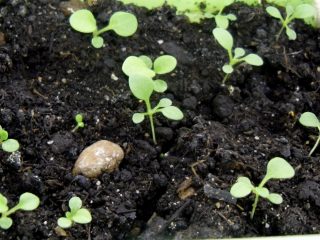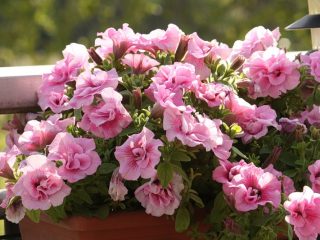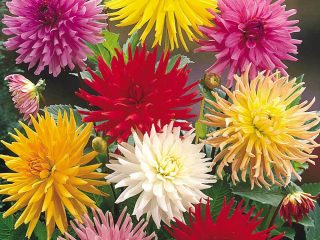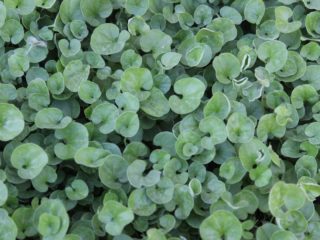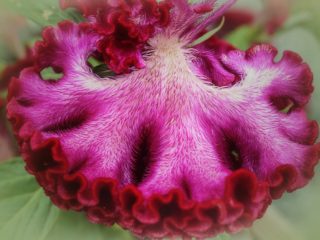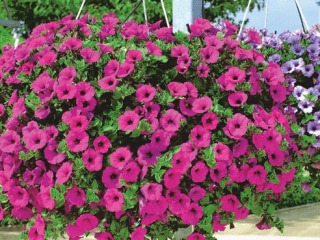Content
Growing castor beans from seeds allows you to get a beautiful and hardy plant in your summer cottage. Planting a crop is quite simple, but first you should study its features and requirements.
What do castor seeds look like?
Castor bean (Ricinus communis) is a plant of the Euphorbiaceae family, reaching 3 m above the ground surface. It has a powerful and branched tap-type root system, the stems are straight, hollow from the inside, pink, red, bluish or dark in color. The leaves of castor bean are large, multi-lobed on long petioles, green with a burgundy or bronze tint.Small flowers are collected in large clusters at the ends of the shoots or in the axils.
The fruits of the plant look like three-lobed red needle-shaped cones. They contain oval-shaped seeds, gray or copper-red, variegatedly colored. The shell of the grains is smooth and shiny. The seeds look a bit like mites, hence the name of the plant.
When to sow castor bean seeds for seedlings at home
The timing of planting castor beans for seedlings depends on several factors. It is necessary to take into account, first of all, the region where the crop is grown, as well as the lunar phases.
According to the lunar calendar
It is recommended to sow castor beans with seeds in accordance with the phases of the night light. The most favorable time to perform the procedure is during the waxing moon.
Sowing seeds for cultivation during the waning moon should be avoided. It is believed that when planted at this time, any crops develop slowly and reluctantly.
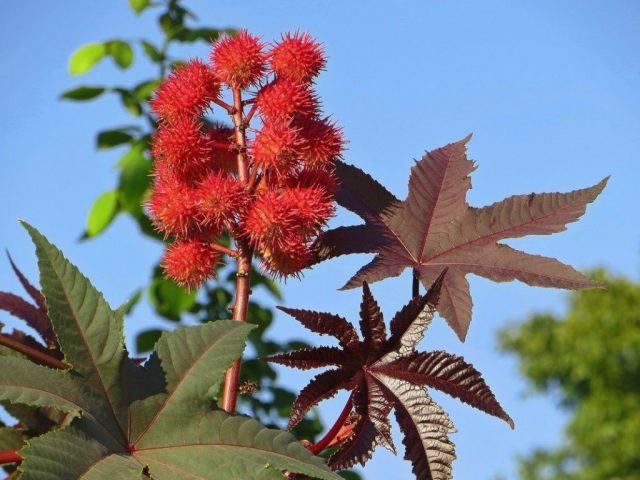
Castor beans contain the alkaloid ricinin and the protein ricin, and therefore belong to the category of highly poisonous plants.
When to plant castor beans for seedlings in the Moscow region
In the Moscow region and the entire central zone, castor beans are sowed for seedlings in early April. Seedlings can be transferred to the garden in late spring or early June.
When to plant castor beans for seedlings in the Urals
It is recommended to plant castor bean seedlings with seeds in the Urals at the end of March or early April. But at the same time, you need to keep the culture at home longer than usual - until the beginning of summer. Transferring seedlings for cultivation into the ground is allowed only after the air has warmed up to at least 20 ° C.
When to plant castor beans for seedlings in Siberia
Castor bean seedlings in Siberia need to be planted at a later date.Usually the procedure is carried out only at the end of April. The seedlings are transferred to open ground for further cultivation no earlier than mid-June, so that they are not damaged by return frosts.
How to properly plant castor bean seeds for seedlings
In order to quickly germinate castor bean seeds and not lose seedlings even before transferring them to open ground, you must adhere to the basic rules. It is necessary not only to observe the optimal timing, but also to pay attention to the selection of containers and substrate.
Do I need to soak castor bean seeds before planting?
Castor bean seeds have a dense shell. Therefore, before sowing for cultivation, they must be subjected to special treatment:
- Prepare a weak pink solution of potassium permanganate.
- Place the seeds in the liquid for about 20 minutes.
- Rinse the grains in clean water.
- Soak the material in the growth stimulator solution for a few more hours.
Preliminary preparation of castor bean seeds for planting will make the shell softer and the first shoots will appear faster. If desired, you can also scarify the grains before growing - lightly rub them with fine sandpaper.
Soil preparation
To sow castor bean seeds for seedlings, it is necessary to prepare a nutrient substrate for the crop. It can be made from turf soil, peat, humus and sand, taken in equal quantities. You can also purchase ready-made soil in the store and add a little perlite to it to increase looseness.
Before use, homemade or purchased substrate must be disinfected from possible microorganisms.The soil intended for growing the crop is spilled with boiling water, calcined in the oven or treated with a solution of any fungicide.
Selection of capacity
To plant castor bean seeds for seedlings, you can take an ordinary plastic or wooden box with sides about 10 cm high. You can also use individual peat pots. In the latter case, there will be no need to pick. The seedlings can be planted in open ground directly along with the container.
If cultivation is to be carried out in a common box, drainage holes must be made at its bottom. In addition, the container must be disinfected from possible bacteria and viruses using boiling water or a fungicidal solution.
Planting castor beans for seedlings at home
Properly planting castor bean seeds for seedlings is necessary according to a proven scheme. It looks like this:
- The selected container is filled with soil to approximately 2/3 of the total volume.
- The substrate is poured generously with lukewarm clean water and pressed down with a spatula.
- Seeds for cultivation are laid out on the surface at intervals of 2-3 cm.
- Sprinkle the grains on top with a thin layer of dry substrate.
- Spray the soil properly with a spray bottle.
- Cover the container with plastic wrap.
The box with castor bean seeds is placed in a warm place with moderate lighting.
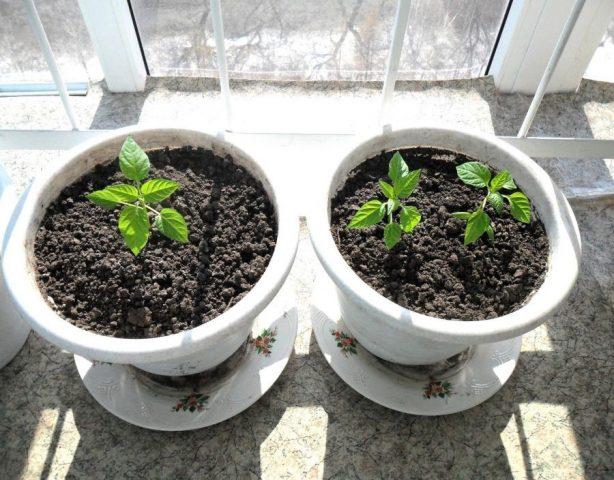
The cultivation of castor beans from seeds in the first stages is carried out at a temperature of about 23 ° C
Planting seeds in peat tablets
It is allowed to sow castor beans for seedlings in Siberia and other regions, including in peat tablets. In this case, you don’t have to prepare soil for the plant - the washers themselves are a nutrient substrate.
The algorithm for planting a crop for subsequent cultivation looks like this:
- The tablets are placed in a plastic container with low sides.
- Pour warm liquid into the bottom of the container so that the washers get wet, but do not disappear completely under water.
- Wait until the tablets swell and increase in size.
- Place one castor bean seed in the recess in each washer.
At the end of the procedure, the container with the tablets is covered with film and sent to a warm place. During the first stages of cultivation, seeds also need to be kept in greenhouse conditions.
Seedling care
To grow castor seedlings from seeds at home, you need to provide the crop with basic care. In the first weeks after planting, you only need to ventilate the container daily for 20–30 minutes and wipe off the condensation from the film. When the first shoots appear, the film will need to be removed. The container is then moved to the lightest window sill for successful cultivation of seedlings. The room temperature is reduced to 15-17 °C.
Caring for castor beans during cultivation comes down mainly to watering. The soil should not dry out, but it should not become waterlogged either. Water is added as needed using a syringe or spray bottle, without eroding the soil.
When the seedlings are properly strengthened, they can be fed with a complex preparation containing nitrogen, phosphorus and potassium. The concentration of the product should be minimal; excess fertilizer does not benefit the crop.
A few weeks after the formation of seedlings, castor beans can be thinned out at home.The weakest sprouts in the container are removed, leaving only strong and strong seedlings for cultivation. It is not advisable to pull seedlings out of the ground; it is better to carefully trim off excess stems with scissors at the level of the substrate.
Planting seedlings in open ground
Cultivation of castor beans at home is carried out until the weather outside is warm with a temperature of about 20 degrees. Night frosts should finally pass, and the soil should thaw properly.
On a site for growing castor beans, choose a well-lit, open place on the south or southwest side. The soil is first dug up and fertilized with humus and peat to increase nutritional value. Sand can be added to clay soil to increase looseness.
Holes for growing seedlings are dug approximately 40-50 cm each. An average of 30 cm of free space is left between individual holes. The scheme for transplanting seedlings into open ground looks like this:
- A small drainage layer is poured into the bottom of the holes and complex minerals are added.
- Seedlings from seeds are first properly moistened, and then the seedlings are carefully removed from the common box.
- They transfer the sprouts into the soil, trying to keep the earthen ball at the roots, and install them in the center of the holes.
- Fill the remaining voids with substrate and water the plants generously with lukewarm water.
Immediately after planting, it is recommended to mulch castor beans with peat - this will slow down the evaporation of moisture.
If the seeds were sown from the very beginning for cultivation in peat tablets or cups, there is no need to remove the seedlings from the old containers. They are transferred to depressions in the soil right along with the container.
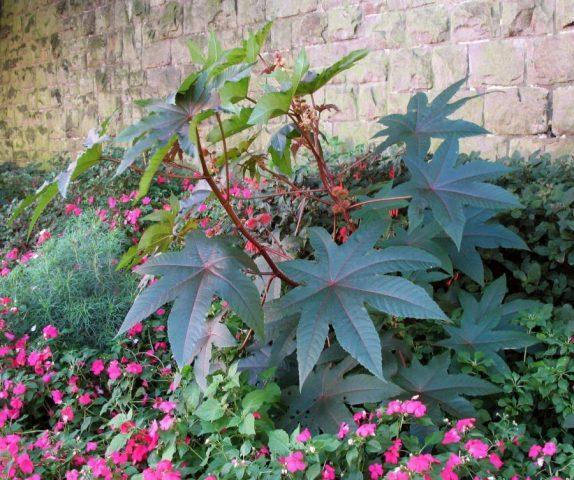
Castor beans repel flies and mosquitoes, so you can plant it next to the garden or in close proximity to windows
Answers to frequently asked questions
Sowing castor beans from seeds at home and then growing the crop rarely causes problems. But sometimes beginners still have difficulties.
Is it possible to bury castor seedlings?
When grown, the seeds of the crop germinate rather slowly, so it is not recommended to bury them too deeply when planting. Typically, the grains are laid out on the surface of the substrate or immersed in the soil no more than 1.5 cm. Otherwise, the crop will germinate very slowly due to lack of light and air.
When transferring sprouts to open ground, the stems need to be buried 2-3 cm. Seedlings that have become stretched and weakened when grown at home can be buried a little deeper into the soil.
Why don't the seeds germinate?
In some cases, castor beans do not germinate from seeds after sowing. Usually the problem is caused by several reasons:
- low-quality grains - damaged, diseased or too old;
- excessive or insufficient watering;
- room temperature is too low;
- excessively deep planting of seeds.
When grown, castor beans may not sprout if they have not undergone preliminary preparation - soaking and scarification.
What to do if seedlings do not grow
If planting a garden castor palm tree for seedlings was not successful and the seeds did not germinate, you can try to remove the grains from the soil and soak and scarify them. After this, the material is placed back into the ground. In some cases, the seeds still manage to germinate.
If the castor plant sprouted successfully, but then stopped growing or began to wither, you need to pay attention to the conditions.When growing, seedlings need to be provided with regular but moderate watering, sufficient light and regular ventilation. If the basic rules of care are violated, the seedlings will not be able to grow stronger and will eventually die.
How to collect castor bean seeds
You can grow castor beans from seeds for seedlings using your own planting material. It is recommended to select plants for subsequent propagation in mid-summer. It is necessary to determine the strongest, healthiest and spreading bushes with tall peduncles. It is from them that it makes sense to collect planting material.
The fruits of the crop ripen in late August or early September. After the nuts begin to dry out, they will need to be carefully removed from the flowering shoots and laid out to dry in a warm but ventilated room for 2-3 months.
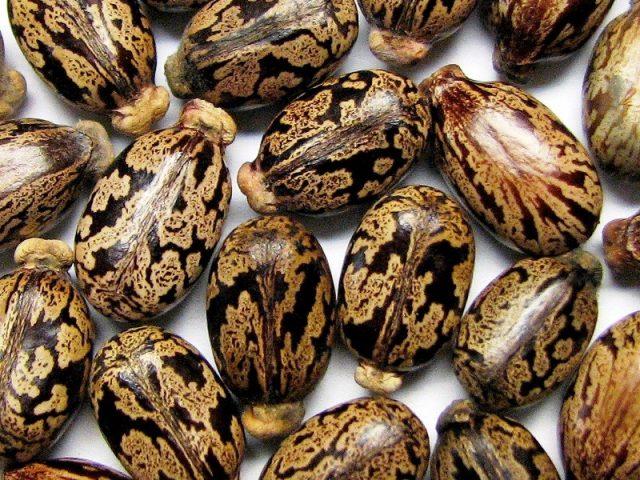
It is not advisable to dry castor bean seeds in the sun - planting material is placed in the shade
At the end of November or December, the seed pods are carefully broken by hand and the oval grains are removed from them. The material is placed in a paper bag or cardboard box, and then stored in a dark, dry place until planting. Seeds remain viable for 3-4 years.
When preparing planting material, it is necessary to take into account the strong toxicity of castor beans. All work with seeds is carried out only with thick gloves. Material intended for cultivation should be stored away from medicines, food, spices and seasonings.
Conclusion
Growing castor beans from seeds is a fairly simple task. However, in the process you need to follow basic rules and provide the culture with quality care.
